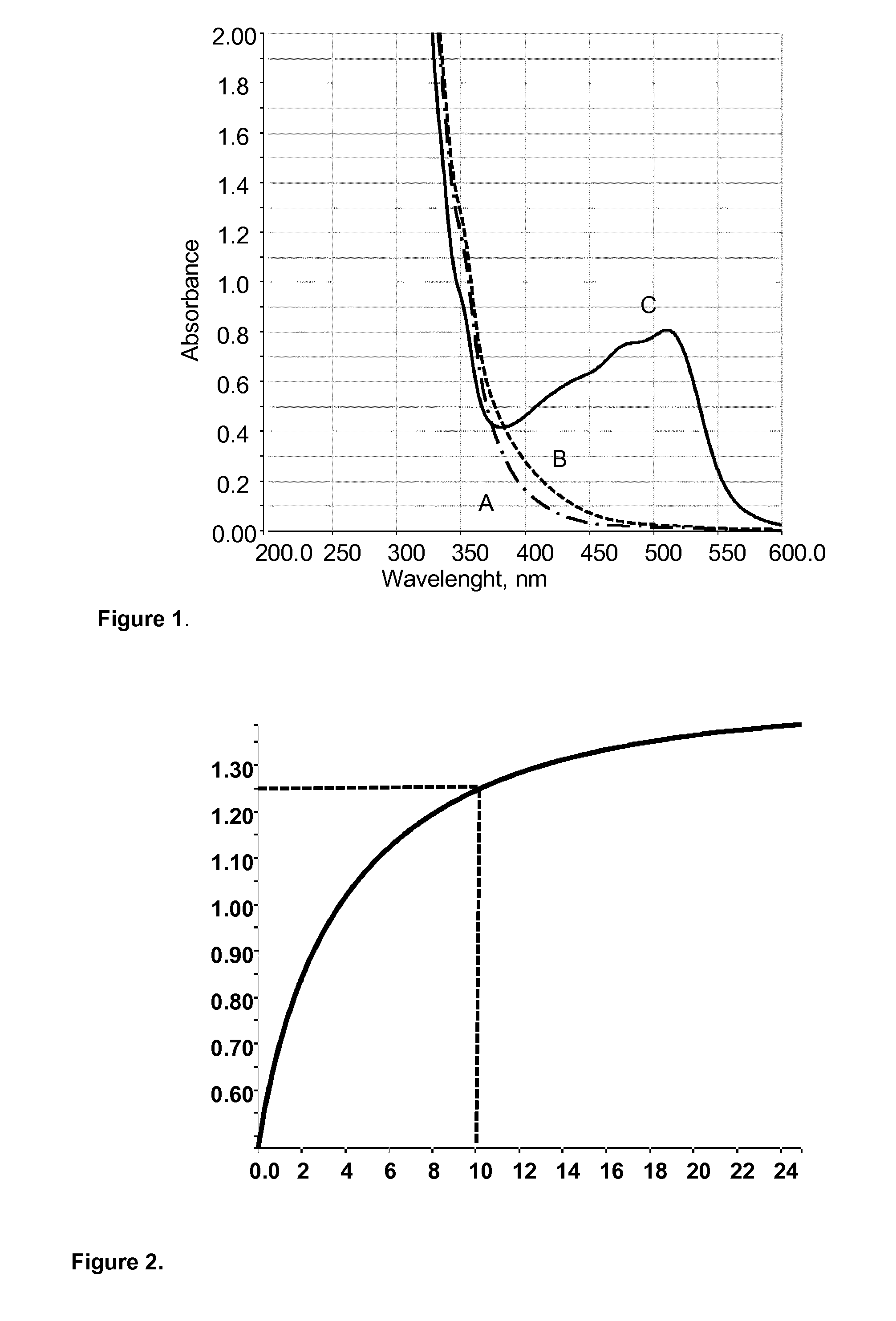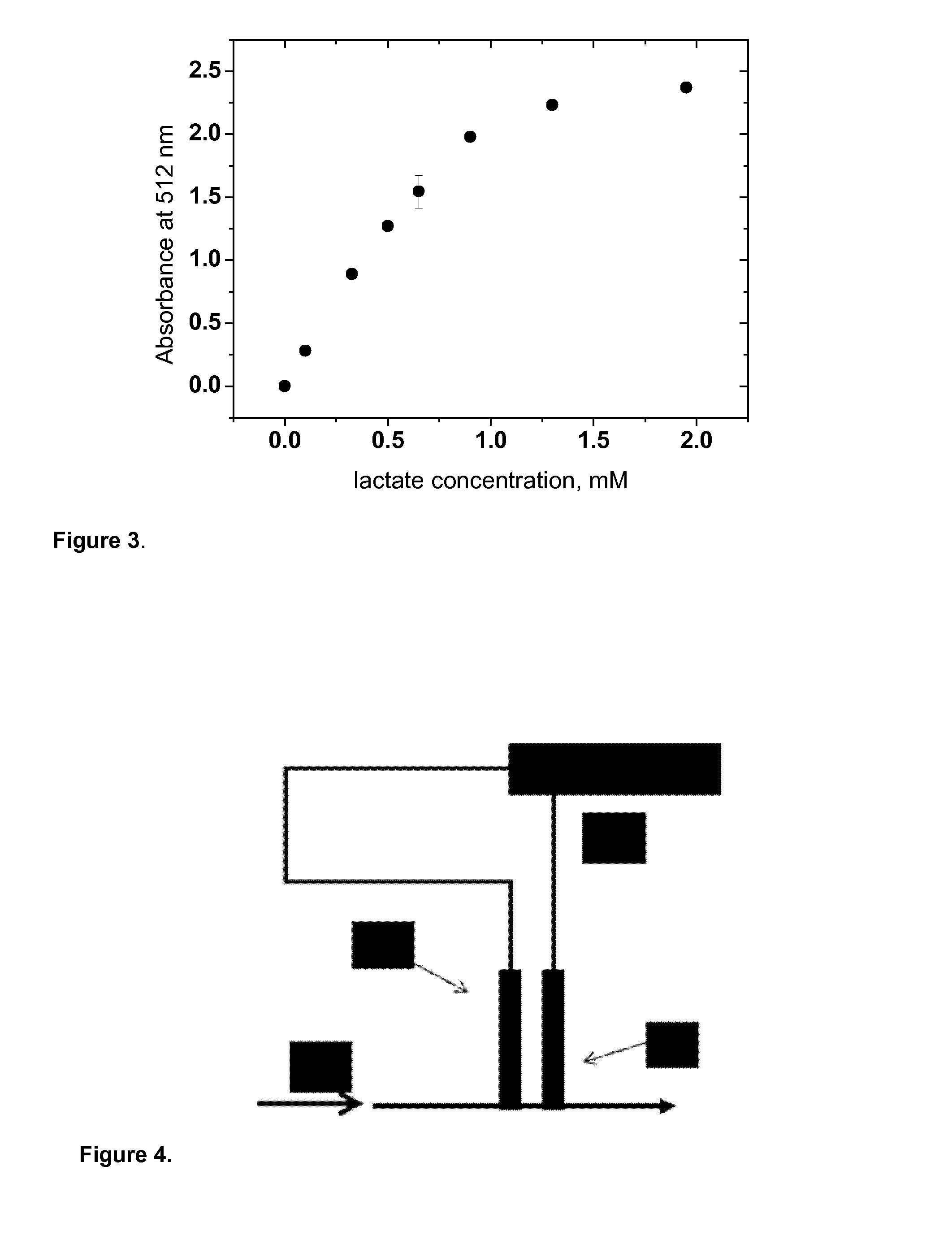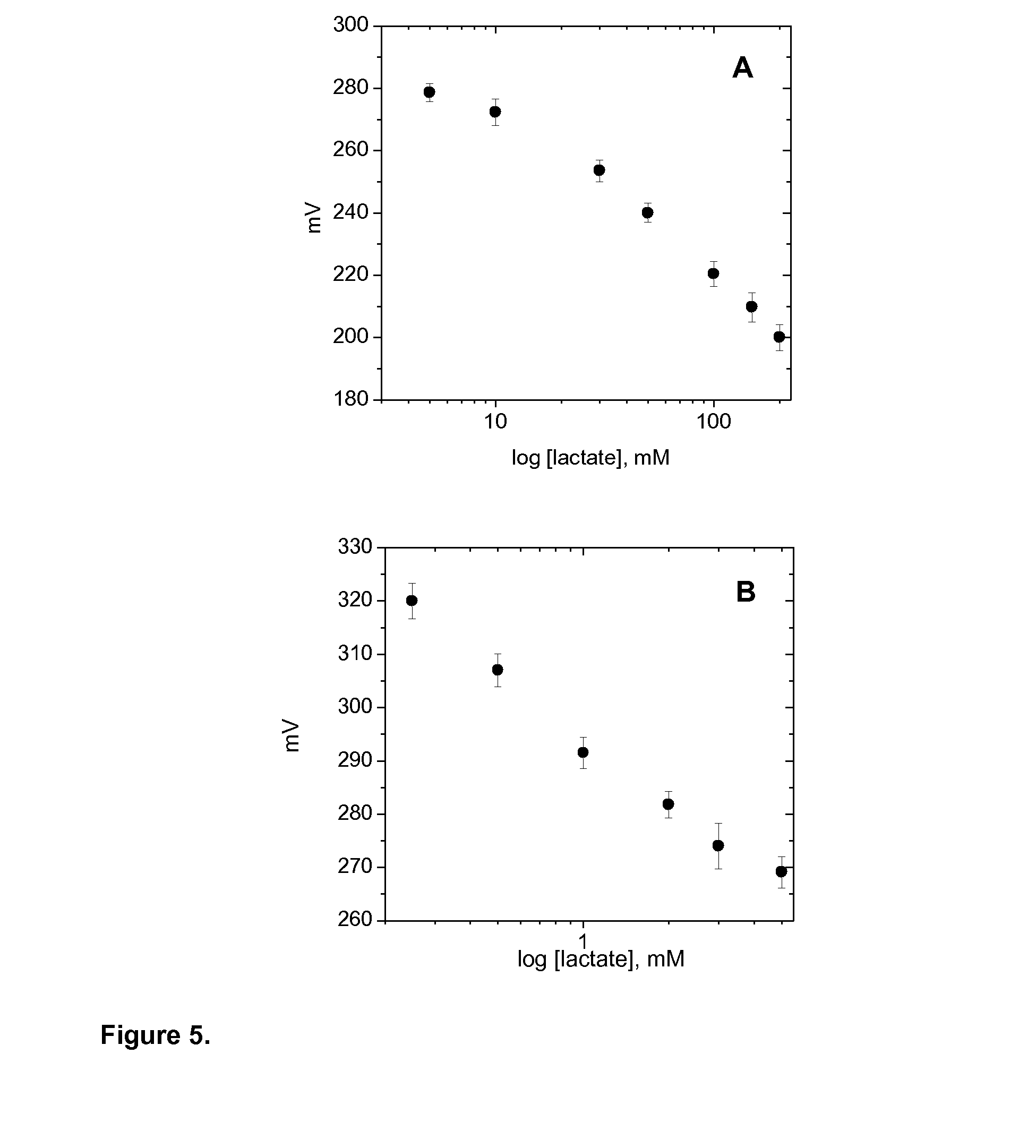Measurement of lactic acid in biological fluids
a technology of biological fluids and lactic acid, applied in the field of clinical analysis of lactic acid (or lactate), can solve the problems of common and often refractory, rapid decline in exercise capacity, and oxygen deficits (tissue hypoxia)
- Summary
- Abstract
- Description
- Claims
- Application Information
AI Technical Summary
Benefits of technology
Problems solved by technology
Method used
Image
Examples
example n.1
EXAMPLE N. 1
Test in Cuvette Using Colorimetric / Spectrophotometric Analysis: Analysis of Lactate in Human Sweat
[0071]A) Preparation of Standard Solutions and Reagents for Calibration Curve.
[0072]For the spectrophotometric / colorimetric assay the following solutions are needed:
[0073]a) Standard solution of 15 mg / ml (15,000 ppm, or 83.3 mM) 1,10-phenanthroline. This solution is prepared by dissolving 75 mg of powder in 1 ml of ethanol and adding 4 ml of water;
[0074]b) Standard solution of 10 g / l (10,000 ppm, or 179 mM) Fe (III) in 0.1 M HNO3;
[0075]c) Standard solution of 1.31 M lactic acid (obtained by diluting 100 μl of lactic acid L6402 Sigma-Aldrich-Fluka, molecular weight 90.08, density=1.2 mg / ml in 900 μl of deionized water).
[0076]a) and b) solutions are diluted and mixed in quartz cuvette in order to get a solution with the following composition: 5 mM 1,10-phenanthroline+5 mM Fe(III) ((d) solution).
[0077]Thus, increasing concentrations of lactic acid are added to solution d) by pe...
example n.2
EXAMPLE N. 2
Test in Cuvette Using Colorimetric / Spectrophotometric Analysis: Analysis of Lactate in Human Saliva
[0093]A) Preparation of Standard Solutions and Reagents for Calibration Curve.
[0094]For the spectrophotometric / colorimetric assay the following solutions are needed:
[0095]a) Standard solution of 15 mg / ml (15,000 ppm, or 83.3 mM) 1,10-phenanthroline. This solution is prepared by dissolving 75 mg of powder in 1 ml of ethanol and adding 4 ml of water;
[0096]b) Standard solution of 10 g / l (10,000 ppm, or 179 mM) Fe (III) in 0.1 M HNO3;
[0097]c) Standard solution of 1.31 M lactic acid (obtained by diluting 100 μl of lactic acid L6402 Sigma-Aldrich-Fluka, molecular weight 90.08, density=1.2 mg / ml in 900 μl of deionized water).
[0098]a) and b) solutions are diluted and mixed in quartz cuvette in order to get a solution with the following composition: 5 mM 1,10-phenanthroline+5 mM Fe(III) ((d) solution).
[0099]Thus, increasing concentrations of lactic acid are added to solution d) by p...
example n.3
EXAMPLE N. 3
Qualitative Analysis of Lactic Acid Using Disposable Device
[0107]Five squares were cut from a common patch, impregnated with 200 μl of the reaction mixture (ie the 5 mM 1,10-phenanthroline+5 mM Fe (III) mixture, solution d) and were allowed to dry. Then 100 μl of solutions of increasing concentration of lactic acid (0, 0.325, 3.25, 6.5, 65 mM) were deposited on each square, irradiated with a UV light of type b) for 60″.
[0108]More intense colors correspond to samples containing higher concentrations of lactic acid. This procedure can be used in a qualitative manner to show, for example, an exceeding level of lactic acid in sweat during training, compared to a threshold value, or in a quantitative manner wherever the mixture can be physically adsorbed or chemically bound to a support and integrated in any disposable diagnostic test strips for portable reader (similar to those used for the measurement of blood glucose in diabetics), or by processing the image in terms of co...
PUM
| Property | Measurement | Unit |
|---|---|---|
| wavelength range | aaaaa | aaaaa |
| wavelength | aaaaa | aaaaa |
| of wavelength | aaaaa | aaaaa |
Abstract
Description
Claims
Application Information
 Login to View More
Login to View More - R&D
- Intellectual Property
- Life Sciences
- Materials
- Tech Scout
- Unparalleled Data Quality
- Higher Quality Content
- 60% Fewer Hallucinations
Browse by: Latest US Patents, China's latest patents, Technical Efficacy Thesaurus, Application Domain, Technology Topic, Popular Technical Reports.
© 2025 PatSnap. All rights reserved.Legal|Privacy policy|Modern Slavery Act Transparency Statement|Sitemap|About US| Contact US: help@patsnap.com



